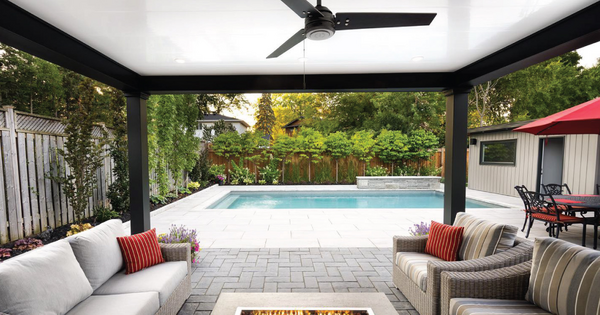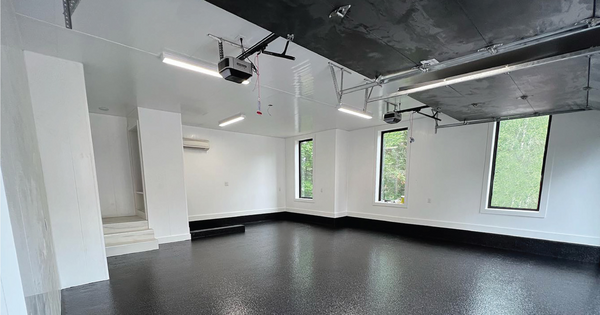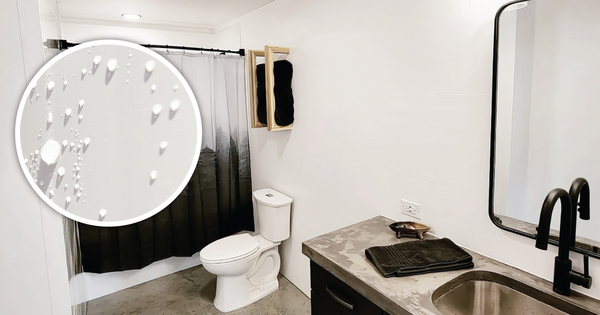When it comes to transforming your bathroom, you're not just upgrading a room – you're enhancing your daily life and adding value to your home. But let’s keep it real – this isn't a breeze. A bathroom renovation is a big deal, and if you're not prepared, it can become a chaotic cash-draining escapade. So, here’s your essential guide to comprehending, calculating, and controlling the cost of your bathroom renovation in 2024.
Understanding the Scope of Your Bathroom Renovation Project
Scope is your project's playground – it defines what you're changing, fixing, or adding. A standard bathroom renovation usually includes updating fixtures, tiles, and maybe layout adjustments. But if you're going for a total overhaul, with plumbing and electrical rejigs, your scope just got larger.
Setting a Realistic Budget for Your Bathroom Renovation
Now, the big question: how much is this going to cost? On average, a bathroom overhaul in the U.S. ranges from $10,000 to $25,000, while a more moderate facelift can come in around $5,000 to $15,000. But remember, your scope affects how much you’ll spend. More scope, more money.
Breaking Down Key Bathroom Renovation Expenses
So, where's that budget going? Let’s break it down.
- Materials and Fixtures – $3,000 to $8,000
- Tiles: This includes floor tiles, wall tiles, and possibly decorative tiles for accents. The cost can vary significantly based on the type and quality of tiles.
- Bathtub or Shower: The cost of a new bathtub or shower enclosure, along with any plumbing and installation costs.
- Toilet: The cost of a new toilet unit, including installation.
- Sink and Vanity: The cost of a new sink and vanity, which may include the sink, countertop, and storage.
- Faucets and Fixtures: The cost of faucets, showerheads, and other bathroom fixtures.
- Labor Costs – $2,000 to $6,000
- Contractor: If you're hiring professionals, labor costs will include their fees for demolition, construction, and installation.
- Electrical Wiring: If you're adding or changing lighting fixtures, outlets, or wiring, there will be costs associated with this.
- Plumbing: Costs for relocating pipes, drains, and installing new plumbing fixtures.
- Demolition and Removal – $500 to $1,000
- Demolition: The cost of removing existing fixtures, tiles, and any other materials.
- Waste Removal: Disposing of the old materials, which may include fees for dumpster rental or waste removal services.
- Cabinetry and Storage – $1,000 to $3,000
- Custom Cabinetry: If you're installing custom-built storage units, the cost can vary based on materials and design.
- Painting and Finishing – $300 to $800
- Paint: The cost of paint for walls and ceilings, if applicable.
- Finishing: Trim work, caulking, and other finishing touches.
- Flooring – $800 to $2,000
- Underlayment: If you're installing new flooring, there may be costs associated with preparing the subfloor.
- Flooring Material: The cost of the actual flooring material, such as tiles, hardwood, vinyl, or laminate.
- Permits and Inspections – $100 to $500
- Permits: Depending on your local regulations, you might need permits for certain renovation work, and there will be associated costs.
- Inspections: After the work is done, there might be inspection fees to ensure everything meets building codes.
- Miscellaneous Costs – $200 to $800
- Accessories: Towel bars, hooks, mirrors, and other accessories can add to the overall cost.
- Ventilation: If you're installing or upgrading ventilation systems, there will be associated expenses.
10 Cost-Effective Bathroom Renovation Options 10 Cost-Effective Bathroom Renovation Options
If you're all about frugality, consider these options to refresh your space without spending too much:
- Paint and Color: Repaint the walls with a fresh coat of paint. Paint is relatively inexpensive and can make a big difference in the overall look of the bathroom. Use light, neutral colors to create a bright and spacious feel. Adding a pop of color through accessories like towels and artwork can also be affordable.
- Tile Strategically: Consider using tiles selectively, such as creating an accent wall with decorative tiles or using tiles only in wet areas to reduce costs. Subway tiles are often cost-effective and can create a classic and timeless look.
- Refinish or Reglaze Items: If your bathtub, sink, or tiles are still in good condition but have lost their luster, consider refinishing or reglazing them instead of replacing them.
- Update Hardware: Swap out old cabinet knobs, drawer pulls, faucets, and other hardware with modern or stylish options. This can give your bathroom a fresh look at a lower cost.
- DIY or Upcycling: If you're handy, consider tackling some of the simpler tasks yourself, such as painting, changing out hardware, or installing new fixtures. Upcycle old furniture or accessories to serve as bathroom storage. For example, a repurposed dresser can become a stylish vanity.
- Focus on Lighting: Update your lighting fixtures to create a more modern and inviting atmosphere. Energy-efficient LED bulbs are cost-effective in the long run.
- Upgrade Shower Curtains and Accessories: A new shower curtain, along with matching accessories like soap dispensers, toothbrush holders, and towels, can instantly refresh the bathroom's appearance.
- Maximize Space with Mirrors: Replace or add mirrors that complement the style of the bathroom. Mirrors can make a small space feel larger and more open.
- Shop Secondhand: Look for gently used or surplus building materials, fixtures, and furniture at salvage yards, thrift stores, or online marketplaces.
- Opt for a Minimalist Design: Create a minimalist space with clean lines and fewer decorative elements. This can create a sleek and contemporary look that doesn't require excessive spending.
Incorporating Contingency Funds in Your Bathroom Renovation Budget
In the world of renovations, surprises are not always the good kind. Hidden structural issues, unexpected wiring problems, or plumbing predicaments can send your budget spiraling. The last thing you want is to halt your project or compromise on quality because your budget is tapped out.
A contingency fund is a safety net, a financial cushion to catch you when unexpected expenses leap out from behind the renovation curtain. It's not an extra expense – it's a smart move to save your sanity. Ideally, you'll want to allocate about 10 to 20% of your total budget to this fund. Think of it as your "just-in-case" money.
Add Trusscore Wall&CeilingBoard to Your 2024 Bathroom Renovation
After all your hard work to upgrade your bathroom, you likely want the space to look its best for as long as possible, right? If your walls and ceilings are outfitted in drywall, there’s a chance it won’t.
Why? In bathrooms, water attacks your walls and ceilings from all directions: Droplets overspray from the tub and shower while moist air slowly eats away at common materials like drywall, letting mold and mildew grow. Bathroom ventilation fans can help, but even well-ventilated bathrooms can still have moisture issues. With PVC bathroom wall and ceiling panels like Trusscore Wall&CeilingBoard, you never have to worry about water damage.
Here's why Trusscore Wall&CeilingBoard is great in any bathroom space:
- It’s 100% moisture and water resistant. Unlike drywall, Trusscore Wall&CeilingBoard is 100% waterproof and moisture resistant, and water will roll right off the panels. The interlocking tongue-and-groove system also means panels install with a watertight seal, so you never have to worry about water getting at the wood framing or insulation. That means you’ll never have to worry about mold and mildew growing anywhere in the room.
- It’s lightweight and easy to install. If you’re planning on renovating your bathroom yourself, Trusscore Wall&CeilingBoard is way more DIY-friendly than drywall. The pre-finished panels weigh 40% less than heavy sheets of drywall and install four times faster, with only one person needed for installation (even on tricky ceiling installs!). Plus, there’s no mudding, taping, priming, or painting required, so you can complete your project in a single afternoon.
- It’s easy to clean. The smooth, non-porous, and water-resistant properties of Trusscore Wall&CeilingBoard panels also make them a dream to clean. During your regular bathroom cleaning routine, you can wipe Trusscore Wall&CeilingBoard down with soap and water or disinfectant spray. Since no amount of cleaning will damage your panels, you can keep your bathroom fresh and free of bacteria.
- It creates a stylish design. Trusscore Wall&CeilingBoard is available in white and gray and allows you to play with shapes, colors, and patterns for more interesting design concepts. If you opt for white panels, you’ll also create a bright backdrop for any metal or wood finishes from your faucets to your bathroom vanity.






